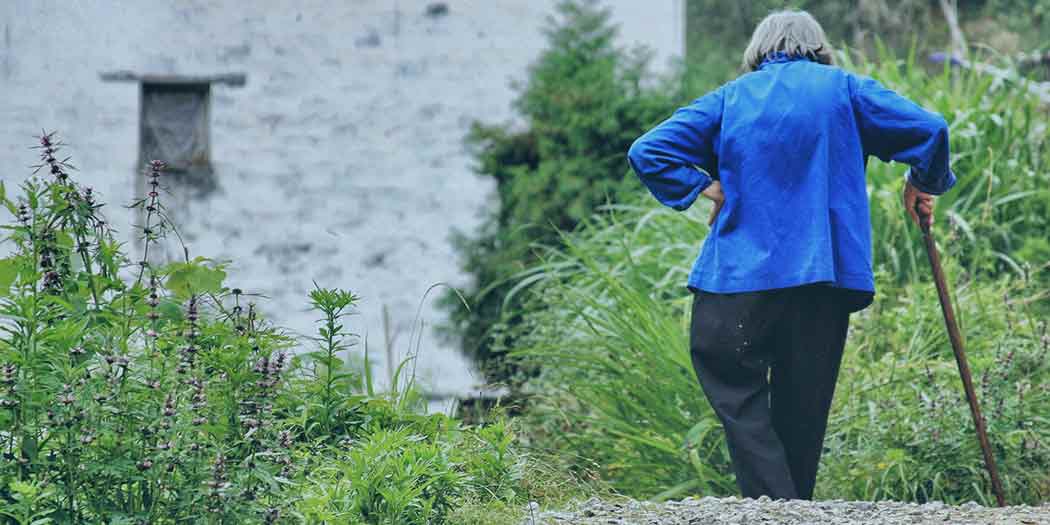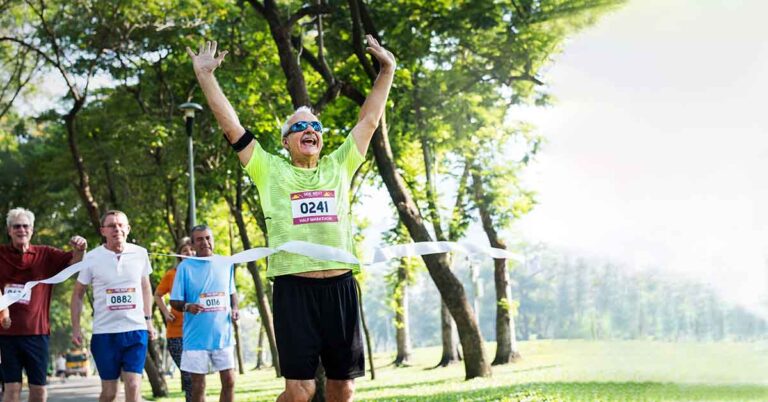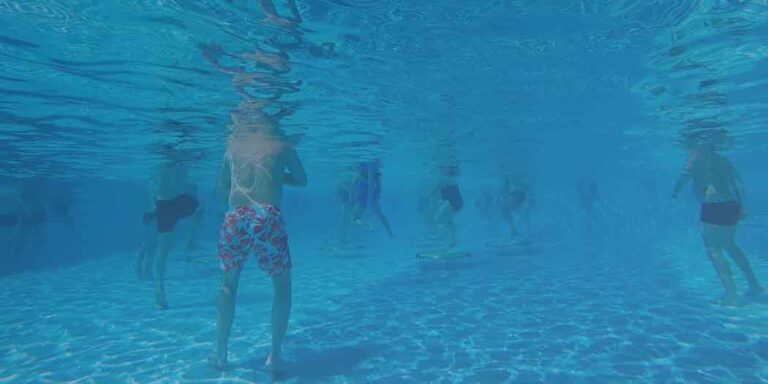How To Keep Your Balance When You Age (Best BALANCE Exercises for Seniors)
If you are over 60, it might be time to check your sense of balance. When you improve your stability, you reduce the risk of falls over time. Better start balance exercises earlier than too late.
Are you concerned about FALLS?
Have you found out that sometimes it’s hard to maintain your balance when standing or walking?
Well, then it’s time to act.
The risk of falling rises correspondingly with age.
Past 60, the average person’s balance will naturally decline if left unchecked.
Of the age group over 80, more than half fall annually.
Overall strength loss, bones getting weaker, imbalances in muscles, and low blood pressure only make things worse. That is quite a significant risk of injury.
Your body, heart, brain, and muscles all need regular exercise to stay in good shape. But so does your sense of balance. It would help if you challenged your stability regularly, so it doesn’t decline.
Regularly exercising your sense of balance will keep it in good form.
So don’t think that your sense of balance is granted for the rest of your life. It’s essential to be aware of the need to maintain and improve it.
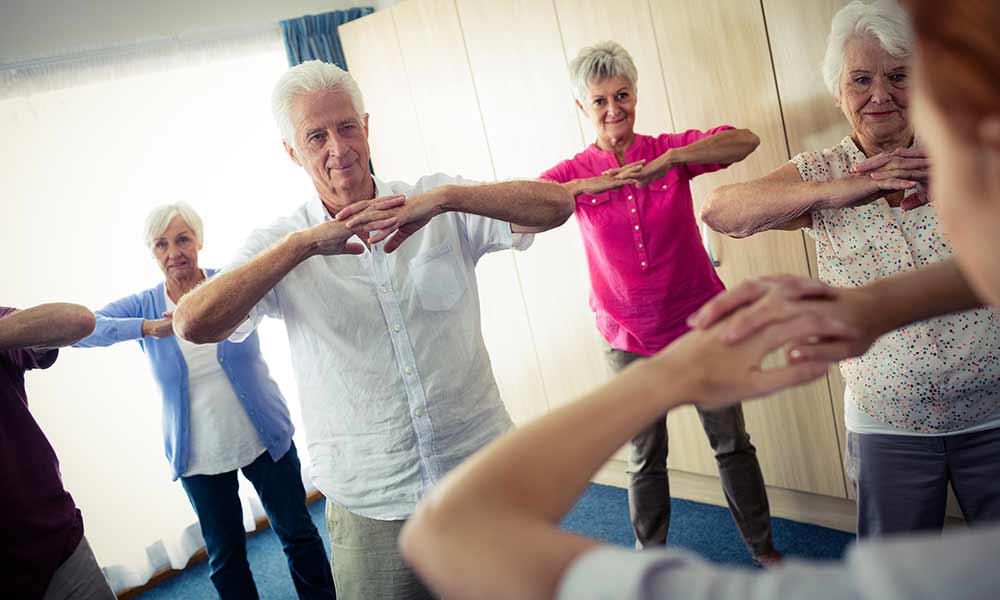
To stay active, you need a good sense of balance.
But there is a risk of a cycle of inactivity.
If your balance is not right, it’s hard to do any activity. And the less active you are, the worse your balance gets.
Are You Concerned About Maintaining Your Sense of Balance in the Future?
Thankfully, it’s relatively easy to keep challenging your balance.
So how do you strengthen your bones and lower the risk of falling?
- With regular exercise
- With good nutrition
Keeping active and practicing balance exercises as you age is vital. It’s also vital to eat a well-balanced diet that supports your ability to move. Your lifestyle habits have the most significant impact.
What Causes Loss of Balance?
Many aging adults end up in the emergency room with fall injuries.
Most seniors fall because of:
- balance disorders,
- household accidents (more than half of the falls occur at home),
- vertigo,
- confusion, or
- eye problems
Your legs and hips become weaker, as you age. That affects your capability to walk.
Additionally, you begin to have sight problems, and your posture might be weak.
Muscle strength diminishes too, which leads to a drop in motion and balance.
Statistics indicate that up to 30 percent of seniors fear falling. That fear affects their confidence and self-esteem.
The best way to avoid stability problems is to engage in regular stability exercise and maintain an active lifestyle. Occupational therapy can help, but the results are up to you.
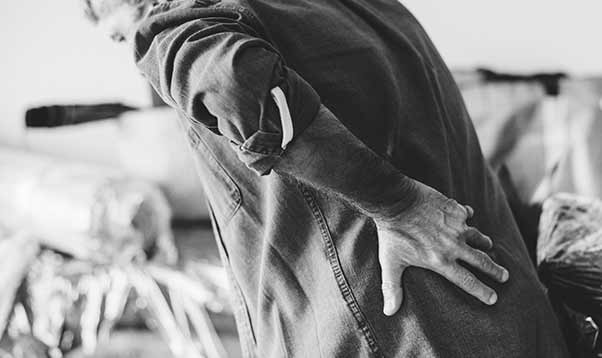
Occupational Therapy Helps Seniors Get Things Done
Occupational therapy is a mode of treatment that is designed to help seniors live an independent and more productive life, regardless of their age or health condition.
More and more seniors are turning to occupational therapy to prevent injuries and restore their mobility.
Some benefits of occupational therapy:
- Preventing falls
- Better health and wellness
- Overcoming daily life challenges (home management for increased comfort and safety)
Balance Exercises for Seniors You Can Do At Home
Now that you know how important balance is to your health focus on balance exercises. They are an essential factor in fall prevention.
You can do some simple balance workouts at home to help enhance your mobility and health.
You can do these activities with a stable chair or near a wall just in case you miss your balance.
The National Institute of Ageing recommends three easy exercises that you can do at home:
1) One-Legged Stands
The one-legged stand is an easy way to help maintain your mobility and balance.
- Start lifting the foot a little bit off the ground. Keep it close to the ground in case you need support.
- Then stand on one foot for 10 to 20 seconds.
- Set your hands on a wall or a sturdy chair, or use a walking cane for assistance, if required.
- Keep your back straight all the time. Knees can be slightly bent.
- Switch to the other foot and repeat several times. You can do this exercise a couple of times per day.
2) Heel-to-Toe Walk
This balance exercise targets the core and leg muscles.
- Stand up straight, place one foot directly in front of the other, so that heel of one foot goes in front of toes of other foot almost touching.
- You can balance yourself by extending your arms out to the sides.
- Imagine yourself walking on a tightrope with tiny steps.
- Walk at around 20 steps, then turn around and walk back. Repeat a couple of times.
3) The Balance Walk
- Raise both arms outward, outstretched at shoulder height.
- Focus on one location ahead of you and walk slowly and as straight as possible towards it.
- When you lift your back leg bring it forward in an exaggerated slow motion. Walk for 20 steps.
The Mayo Clinic has a nice slide show of other stability-related activities.
Balance can be improved with water exercises, like water aerobics. Water acts as a natural resistance for the body, and water exercises engage all muscle groups.
Variations to Movements
If you already have a steady routine for your exercises, you can shake them up by testing your balance by closing your eyes, and by changing your base support by keeping your legs closed.
These k
Get Stronger Core for Stability
Strong core muscles are a must-have for an athlete’s physique.
To all of us, a stronger core indicates better stability to our movements. So stronger abs prepare your body for the future.
Get Help From Others
If you’re worried about your stability, consult with your doctor to find out the right activities for you.
It’s often easier to exercise when you’re answerable to somebody, so it might be beneficial to have a trainer.
And if your balance isn’t as good anymore, you don’t have to give up exercising. For example:
- You can ease your walking exercise with a walking cane in hand.
- Stationary bikes are known for their stability, making them a safe choice compared to elliptical devices and bringing peace of mind to seniors and their caregivers.
You can find out more about what kind of walking cane is the best for stability here.
Staying active, and exercising daily is sure to help an older person maintain balance and mobility into their golden years.

